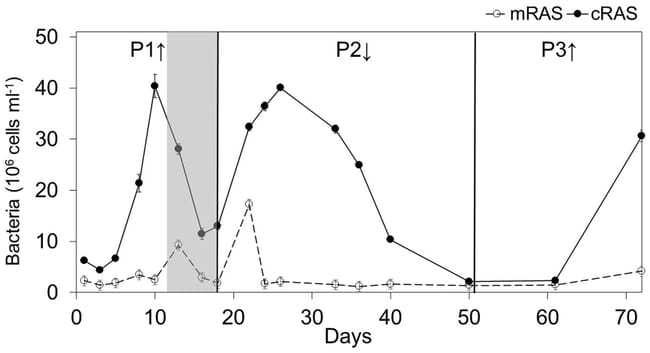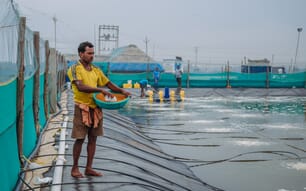So suggest the authors of a new study, who looked in the use of membrane filtration in an RAS containing Atlantic salmon smolts over the course of 72 days.
The authors, led by researchers from NTNU, note that a key challenge in RAS is the accumulation of particulate organic matter, especially the fine and colloidal fraction, due to low removal efficiency of current technology. The supply of organic matter is typically the limiting resource determining the carrying capacity of heterotrophic bacteria in the system. They proposed that an appropriate and stable carrying capacity can produce an optimal microbial environment in RAS, which causes fewer blooms of opportunistic bacteria and provides more stable community dynamics.
While membranes have previously been shown to increase growth rates and reduce mortality in cultivation of marine fish larvae, the researchers’ hypothesis was that membrane filtration in RAS increases the stability by keeping the CC lower and more even – which is critical in a system with high biomass and high organic loading, such as juvenile salmon production units.
Methodology
In order to test this theory they compared the performance of Atlantic salmon parr in two pilot-scale RAS – one with membranes, one without – for 72 days.
The ultrafiltration membrane used was produced by Pentair and the module contained two membranes in series, each with an area of 4.0 m2 and an average pore size of 20–30 nm. These treated 10–15 percent of the total water flow.
To evaluate the bacterial dynamics with and without membrane filtration at different organic loadings, the water exchange rates of the systems were manipulated equally to create periods with high and low loading of organic matter.

The results show that water in the system with the membrane (mRAS) had a more stable level of organic matter throughout the experiment, with higher microbial diversity, reduced bacterial blooms and generally lower bacterial densities than in the conventional system (cRAS). © Fossmark et al, NTNU
Results
The results (see figure 1) showed that the water in the system with the membrane had a more stable level of organic matter throughout the experiment, with higher microbial diversity, reduced bacterial blooms and generally lower bacterial densities than in the conventional system.
Meanwhile the physicochemical water quality was also better in the membrane system, due to the lower turbidity and particulate organic matter (POC), and slightly lower concentrations of total ammonia nitrogen (TAN).
The fish in the system with the membrane were also 14 percent bigger than the fish in cRAS at the end of the experiment, although the researchers note that “it is hard to conclude whether the better growth in mRAS was due to higher temperatures (caused by membrane operation) or better water quality, as it was probably a combination of both.”
One the downside, they note that membrane filtration adds additional costs and complexity to the RAS for the fish farmers, and it demands frequent cleaning.
As a result, they point out that more research is needed to evaluate if the increased cost can justified by the better water quality yielding healthier salmonids.
Nevertheless, they conclude that “membrane filtration gave more stable and better physicochemical and microbial water quality, which will reduce the probability for microbially related accidents in RAS.”
Further information
The full article, published in Aquaculture, under the title “Effects of reduced organic matter loading through membrane filtration on the microbial community dynamics in recirculating aquaculture systems (RAS) with Atlantic salmon parr (Salmo salar)”, can be accessed here.




